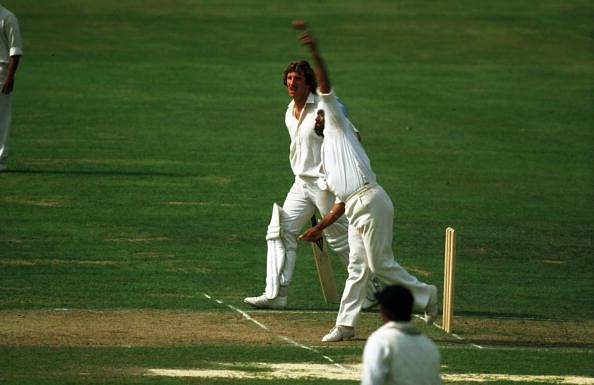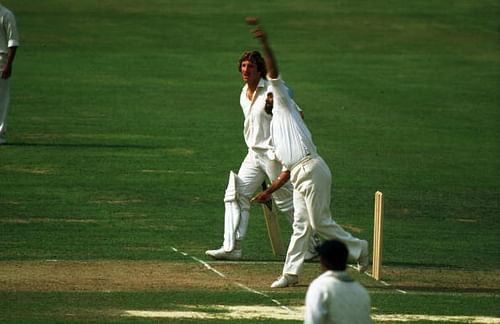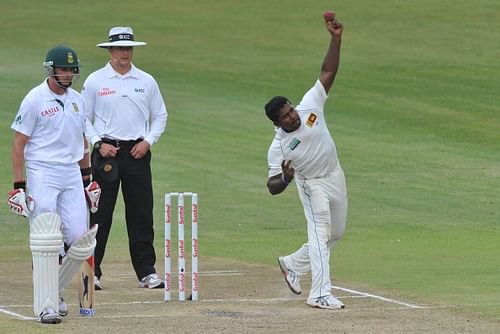
Spinners in modern-day cricket - Endangered Species?

Where are the spinners? Yes, you read that right. Where has that specie disappeared which looped and tweaked its way to bamboozle the best of the batsmen in the cricketing world? Perhaps, to the Twenty 20 generation that I belong to, this inquiry hardly makes sense. In fact, it slightly tilts towards being ridiculous. When on earth were there as many variations (doosras, teesras, carrom balls and what not!) in a spinner’s repertoire than in this age of ‘instant noodles’ cricket?
Agreed, the shorter as well as the shortest form of cricket, have certainly done a lot of good for the popularity, approach as well as the skill aspect of the game. However, there have been certain nuances of this great game that have taken a severe beating and perhaps, the most ostensible of them is the ‘Art of Spin Bowling’.
As a disclaimer, I would like to state that having been a club level ‘toss it up off-spinner’ (howsoever mediocre at that) during my playing days and perhaps because I wasn't as competent at the any of the out-of-the-box variations, I am slightly biased towards more traditional spin bowlers; although, I appreciate the value and efforts of their modern day unorthodox counterparts.
Where have the classical spinners gone?
Nevertheless, the alarming rate of disappearance of the aforementioned first commodity worries me a lot. Here, I am not looking at the effectiveness of a spinner, his success or any of those parameters usually discussed while discussing spinners. I am just lamenting the ever reducing trend of conventional spinners who, irrespective of their success or otherwise, were a purist’s delight.
In Test cricket, the mother of all sort of cricket, it is increasingly being seen in recent past that on good wickets (excepting the ‘dustbowls’), even the smartest and coolest of the captains are using their spinners as containing options. Spinners are no more an attacking option, but a defensive shield with an alternate utility of providing much-needed rest to the seamers.
Rightly, the spinners have started romancing the leg-stump in betrayal of the off-stump/outside off-stump line. Yes, they are drying up runs, inducing a false stroke from batsmen once in a while and adding scalps to their tallies but the art of purchasing a wicket seems to be long lost. Where are all those skills? Where are the revolutions imparted on the ball, the loop, the guile, the dip, the drift, the turn and that ecstasy of making a fool of a batsman?
If we can’t see these in Test cricket, we are far unlikely to see any of it in any of the shorter version of the game. The gamblers that used to roll the dice of a loopy drifter in hope a jackpot of a wicket seem to be on the verge of vanishing, if not already vanished.
Disappointing Indian spinners
In the hope of a silver lining to the otherwise dark cloud, I look around the international arena and examine few of the leading spinners across the world. Scrutiny, just like charity begins at home and I find Ravichandran Ashwin and Ravi Jadeja from India. Jadeja has been fairly successful in limited overs cricket for some time whereas Ashwin has struggled in all forms of the game. But, no I will discuss the success of a bowler on some other day.
Today, I discuss only the losing ground of the conventional way of spin bowling and both the above bowlers disappoint me.
“Search for your length early and stick to it... Use your stock ball till you finally take out your surprise variation to flummox the batsman... Give it air... Bring your arm as close to your ear as possible,” we were told in the young age. Seems nobody told this to Ashwin. He tries everything in his six balls, often without great success and certainly isn’t particularly a pleasing sight to the purists’ eyes. Jadeja, on the other hand, has always been successful when he has tossed it up but has entangled himself in his love towards those darts which brought him success in domestic akhadas but have exposed him on sporting pitches.
Pakistan, known to produce some naturally gifted tweakers have been relying upon Saeed Ajmal for quite some time now. Notwithstanding the straightening beyond 15 degrees, he has been by far the best spinner in the last 24 -30 months on the international circuit. Does he stand to the test of the conventionality? Not quite. Despite, being the most successful spinner, he has been pretty controversial when it comes to his action and that has spoilt his case.
Australia have struggled to find a spinner after Shane Warne hung up his boots. West Indies have produced a spinner here and there but again most of them have found themselves in the murky waters of chucking. New Zealand and England have struggled to find a replacement for Daniel Vettori and Graeme Swann. South Africa were never known to produce spinners and their cupboard has mostly remained empty.
Sri Lanka, on the other hand, has been a home of mystery spinners for a while. Ajantha Mendis, Sachithra Senanayake, Akila Dananjaya, Suraj Randiv all have been promising and have chipped in time and again to keep Sri Lanka’s spin resources evergreen. But amongst them is the one who has impressed me a lot amongst the several in the world.
Rangana Herath – Light amongst the darkness
Rangana Herath, the pocket dynamo, has been silently climbing the stairs to become second most successful spinner ever for Sri Lanka. And yes, he is the one I am talking about when I say adhering to the traditional spin culture. Flawless action, rhythmic rotation of the arms, use of the crease, with the ability and willingness to toss the ball up there at a driving length on any surface.

With his short, chunky, stocky frame approaching the stumps in rhythm, he is such a wonderful sight. Herath has tasted success probably on all surfaces he has played on, in the recent past. He has troubled most of the batsmen with his guile and dip and all this he has done wearing a ‘half-sleeved’ jersey with not a word about how much he bends his bowling arm.
In hindsight, another traditional spinner I can recall who did not possess all these doosras, teesras and other fancied deliveries, but had tremendous faith in his fingers to give a rip to the cherry was Graeme Swann. Arguably, amongst the most successful spinners in last 5-6 years. Never shy of giving the ball air, his ball hardly crossed 55mph barring the odd quick ball he sent down. Still, he enjoyed loads of success.
Despite the success of these finger spinners, the majority of the current crop of spinners trust their wrists to do more good than their fingers. Not necessarily, this thought has helped them scaling peaks of success, it still remains a ‘mystery’ to me why the more traditional approach towards spin bowling is disappearing in thin air.
Who are those endangered species that still continue to carry the baton of the age old tradition of spin bowling. Who are the ones that still resort to time-tested methods and please the eyes, if not to the extents of Bishan Singh Bedi and Erapalli Prasanna. The name that stands out is Herath. But with age not on his side, we are unlikely to see him go about his business for long.
I was quite impressed with the way Nathan Lyon imparted the revolutions to the ball, but he too has not been a regular part of Australia’s plans. Apart from these two, I find it hard to earmark any of the bowlers in the international circuit to be able carry on the baton of tradition.
The future doesn’t look bright
The future too appears bleak in this respect. Standing as an umpire in local cricket, here in India I am appalled at the growing number of left-arm orthodox bowlers that represent a side. The least I can say is most of them are not even close to what can be called ‘orthodox’.
On an average, each side has two left-arm spinners and one of them is outright chucker. The other one slightly better, a dart thrower. No one on the circuit we can say have idolised the great Bedi. Understandably, the youth is always inspired by their more illustrated stars, idols and inspirations. Having seen a dearth of spinners at the international level, it is little wonder that domestic cupboards have dried up as well.